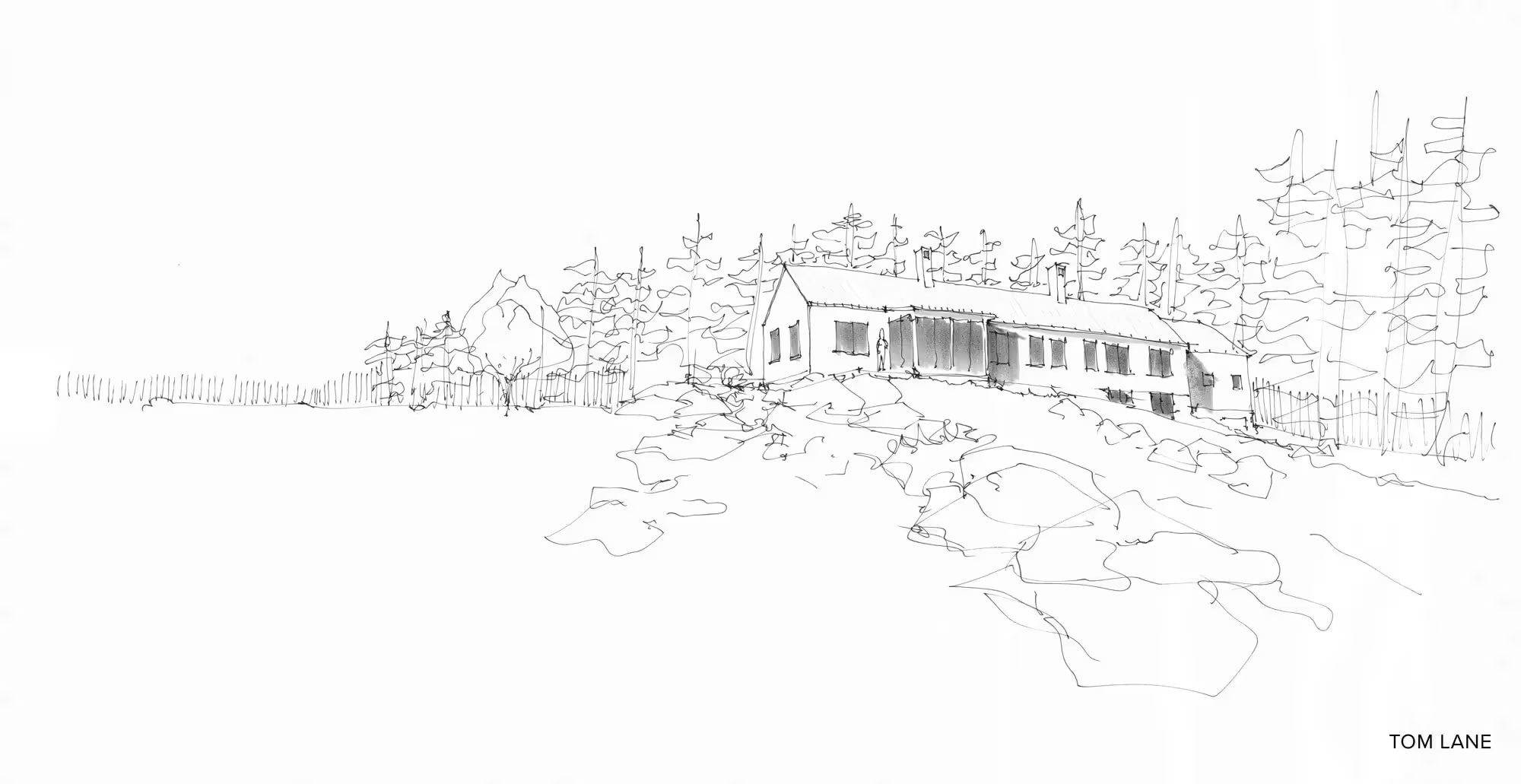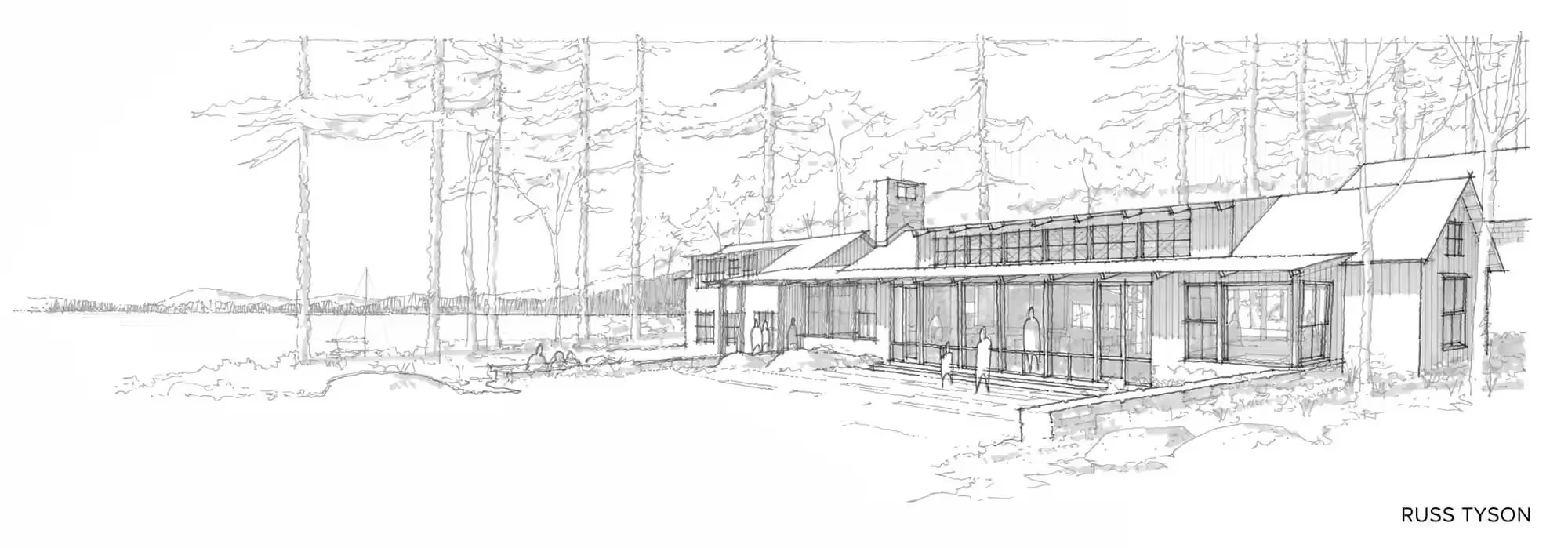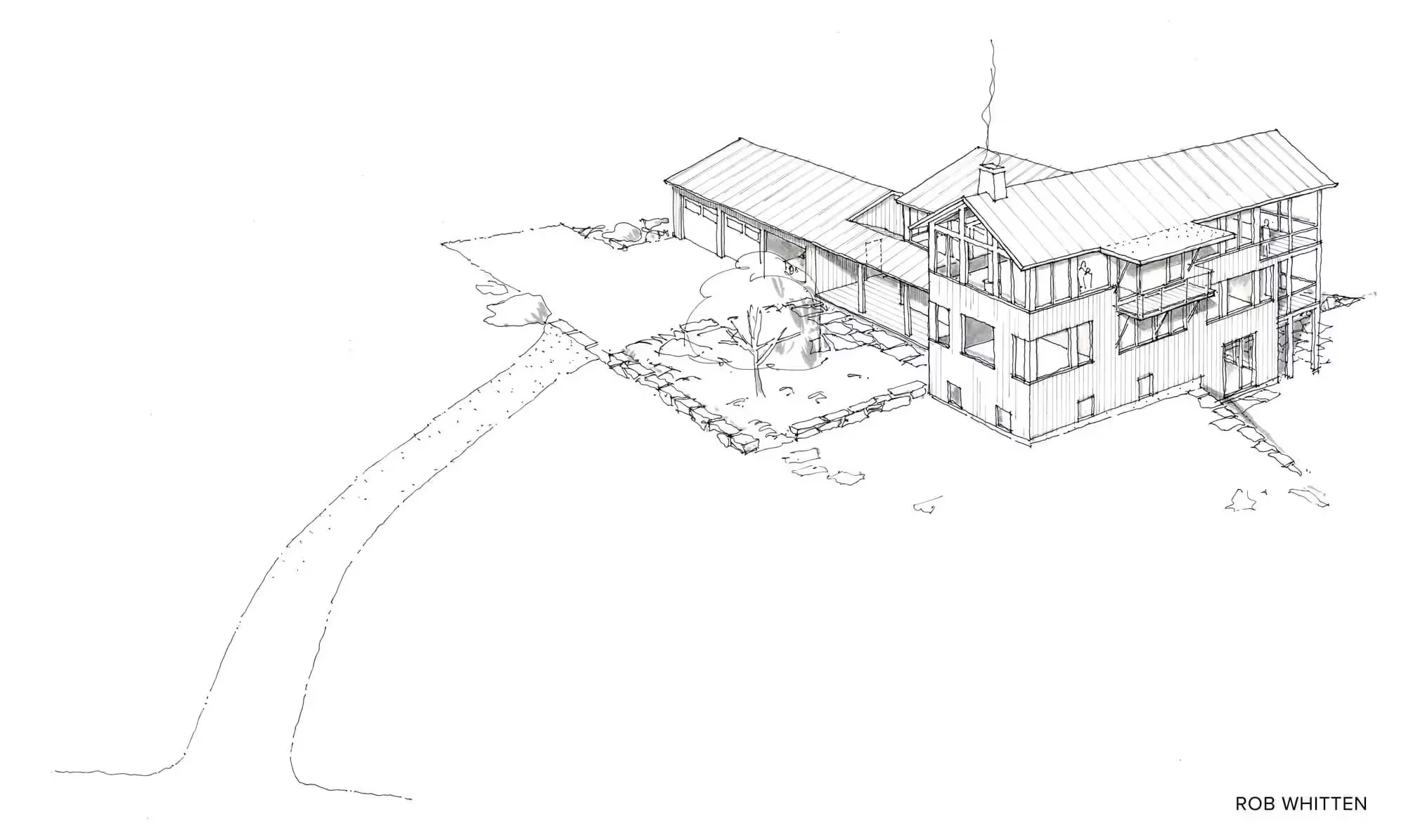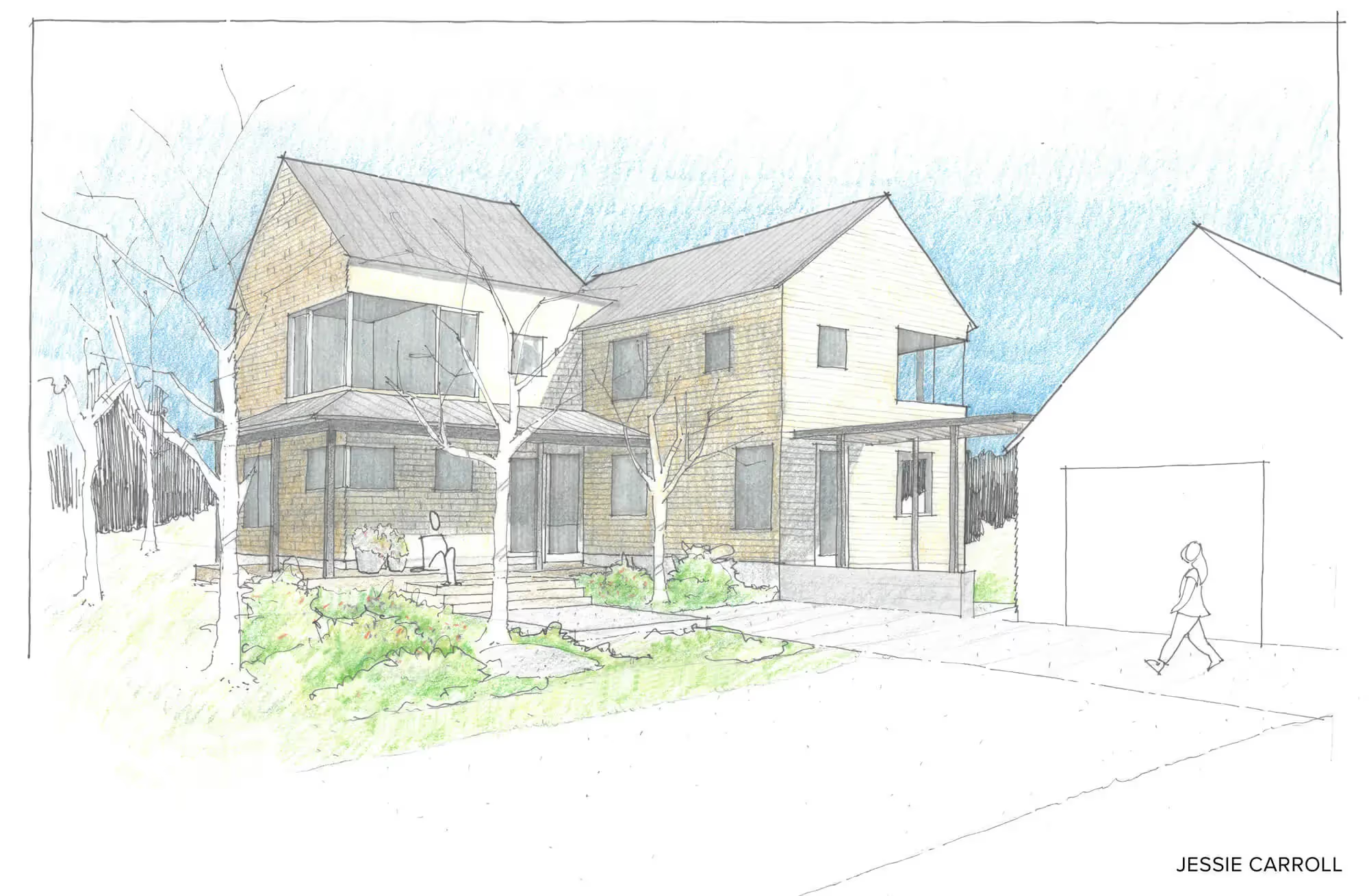The Art of Hand Drawing


At Whitten Architects, we of course computer draft, detail, and specify every home we design, but in the beginning stages of design, many of us in our studio prefer something a little more analog: hand drawing.
You know how the movie almost never lives up to the book that came before it? There’s good reason for that. Books rely on our own mental images for their illustrations and are therefore far more provocative. Similarly, hand-drawn sketches and schematics require more of the viewer’s own imagination than do machine-aided graphics.
At Whitten Architects, we believe that drawing by hand is the most immediate and direct articulation of the imagination possible. Drawing is also fundamental to our ability to communicate with our clients. We use a variety of methods to create and then depict what a specific family’s home will look like prior to construction. Computer-aided drafting (CAD) software requires us to input a myriad of project specifics including dimensions, details, and even materials. Early in the process of imagining, this can get in the way of our ability to efficiently fill an intimidating blank piece of paper with schematic notions.
Freehand drawing also requires fewer tools and resources than the alternative, allowing us to quickly explore ideas and test potential design solutions with just a pen and paper. This allows us to record a thought virtually anywhere, at any time, with minimal expense. It also saves time. For conceptual design, we find drawing by hand to be the most efficient way to manipulate form, scale, proportion, space, order, orientation, and then test these within the site-specific context. We can then effortlessly communicate complex design strategies in a simple and abstract way.
The act of hand drawing can even spontaneously reveal a new and unanticipated concept. The right side of our brain is more creative and intuitive. If given the opportunity, it can explore, find, and express ideas outside of the linear and more rational left-brain analytical processing.
Drawing by hand can be intimidating to many, especially when it comes to making “mistakes.” We draw on layers of tracing paper, which automatically creates a record of our thought process so that we can quickly explore an evolving thought pattern without losing a record of where we were before. As with most inventions, failing many times ultimately leads to a well-considered solution. Also, when you physically record something with your hand, you have better recall of it. After spending a few hours working on a problem, we often find ourselves searching for a more thoughtful solution even after we’ve left the studio for the day. When working on a computer, it is easy to get lost in the details of a design that are only important later in the design process. Because they are inherently less detailed and more abstract, hand drawings allow us to maintain focus on the big picture.
Another thing we love about hand-drawing is that it naturally feels integrated with its organic context. Where hand-drawn architectural solutions are free-flowing and alive, a computer forces us to use more specific shapes and dimensions that can make the architecture feel overly precise and thus less integrated with nature. Most of our early schematics focus on integrating a home with its specific site and context. Our pens reach out into the landscape and there’s an intent to marry inside to outside so much so that it can be hard to tell where the building ends and the scenery begins. This leads to outdoor spaces becoming just as important as indoor spaces. Likewise, the surrounding vegetation and texture become just as important parts of the design as the materials that make up the architecture.
An added bonus? Because hand-drawn illustrations look unfinished and less precious, they naturally encourage the client to be more of a participant in the design process as well. A client gets to fill in the blanks and focus on the big picture.
While there’s no replacing computer-aided drawings in design, hand drawing keeps us connected to the art of architecture. View the gallery below to see sketches from several members of our team and read our article on hand-drawing in a recent issue of Maine Home+Design.




